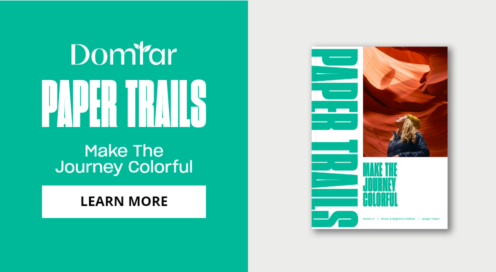The Future is User-focused: How organizations have adapted UX into their design process
In this UX edition of Business Perspectives, design leaders tell us what role UX plays in their organizations.

Contributors:
- Andrew Boardman RGD, Principal at Manoverboard in Winnipeg, MB
- David Coates RGD, Partner at Ion Brand Design in Vancouver, BC
- Adrian Jean RGD, Partner + Executive Creative Director at spark*advocacy in Ottawa, ON
- Timothy Jones RGD, President and Creative Director at Banfield in Ottawa, ON
- Peter Scott RGD, Principal at q30 design inc in Toronto, ON
- Stüssy Tschudin RGD, Principal at Forge Media + Design in Toronto, ON
- Dzung Tran RGD, Lead Designer at Bounteous in Toronto, ON
- Meggan Van Harten RGD, Partner & Strategic Leader at Design de Plume in Sudbury, ON
- Marko Zonta RGD, Creative Director at Zync in Toronto, ON
The discipline of UX design is evolving fast and is more in-demand by clients both internal and external. Have you and your organization adapted to this?
Adrian: We have experienced some confusion from clients around UX vs UI vs traditional design process and what roles and solutions stem from each. While clients focus a lot on UI, we often have to bring them back to UX, the reasoning and strategy behind the result. So for us the adaptation has been to double down on the strategic build of creative to answer the "why" and "who" and then move to the output as the "how" or "what".
Marko: We started developing our UX and UI design capabilities about 10 years ago. We saw an opportunity to bring our brand work and digital together to deliver even better results for our clients.
Meggan: We've invested in furthering our internal understanding of UX design. It's wild to think that UX wasn't part of the core curriculum for design even just a few years ago, but the investment into understanding and building that knowledge has been extremely valuable to our design process.
Peter: Eight years ago we hired dedicated UX expertise to help q30 build a strategic view towards UX and have a dedicated person to oversee UX implications of a project from start to finish and also to mentor other design staff on basic UX principles and design best practices.
Stüssy: We approach all our projects (digital and physical) from the end user's perspective. And with this in mind, we do thorough research (discovery) and synthesis (theme and persona creation) at the outset of all of our projects. Whenever possible, there is user testing throughout the project and iterations of design solutions where applicable and possible.
Timothy: In the last three years, we have consistently had a Senior UX designer on staff. It has become a part of our workflow and process for all digital products, and it is the foundation to everything. UX expertise is crucial for design firms to remain relevant and to develop digital products that can compete and contribute to achieving business goals.
How has the involvement of UX expertise changed the design process at your organization?
Adrian: UX expertise has enriched the client conversation around the design process. It can create touchpoints that non-designer clients can relate to and draw better decisions from. The creative process is often an opaque process for the clients, and so UX can bridge the gap in some respects by connecting business intelligence with creative intent to form a visual workflow that drives results.
Andrew: We were designing for the web before the term "UX" came into being, so we continue to roll UX and visual design into a single category. As a small studio, we understand design as a single discipline — UX is one component for thinking about how an organization or initiative presents itself online. In other words, UX is a way to formally think about a project during certain stages. Design is considered throughout.
David: For us, UX design is no different from any other type of work. We approach UX with the same diligence we use to develop a place brand. Accessibility, ease of use, legibility and yes, delight, all need to be considered.
Dzung: UX is part of brand development right from the start of our projects, so integration with the design process happens seamlessly. Personally this has led me to learn new tools and software like Sketch, Figma and Envision.
Marko: Integration of UX and UI in our practice expanded our offering. We think of every brand project as a digital project, so we start planning and designing our solutions with that in mind.
Meggan: It really influenced our decision-making and had us hone in on the "why" part of the design process. It has also expanded how our organization educates clients. We're able to demonstrate how design decisions are actually best for people with great UX planning and monitoring. It resonates so much better than just saying this is what we do. We can show the impact that was made with our decisions in place which helps us to make more impactful designs.
Peter: All our projects with digital aspects now begin with UX planning and it influences our design decisions. Since we have had a well-developed UX practice, we have seen a significant increase in the size and volume of digital projects. We have also seen a trend where large digital projects are delineated into 2 phases — with Discovery and Alpha as phase 1 and Development and Delivery as phase 2.
Stüssy: It has become a lot more theoretical and informed. Whereas 20 years ago, the focus may have been more on the visual execution, nowadays our design decisions are a lot more evidence-based.
















